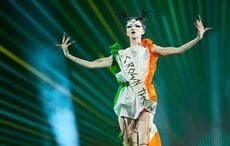The Irish language, as the oldest vernacular literature in Northern and Western Europe, has produced a disproportionately large amount of world-renowned literary texts: “Táin Bó Cúailnge,” “The Wooing of Étaín,” “Buile Shuibhne,” “Bricriu's Feast,” “Deirdre of the Sorrows,” “The Pursuit of Diarmuid and Gráinne,” “Clann Lir,” “Cúirt an Mheán Oíche,” and “Caoineadh Airt Uí Laoire.” But what was the last Irish novel you read?
As a language learner, It’s important to remember that, for most people, reading ability remains at higher levels for longer than speaking skills. This means that reading a prose text is easier than launching into a full conversation with a native speaker or listening to any one of the Irish-language radio stations (Raidió na Gaeltachta, Raidió na Life, Raidió Rí-Rá, Anocht FM, Raidió Fáilte) on the web.
Reading also has the advantage of privacy – no risk of public embarrassment or stage fright.
Having taken the plunge, what should you select to read? Some light fiction? A murder mystery? Some chick-lit? Some graphic novels?
Among these genres, you’ll find the latest Liam Mac Cóil historical novel, the 17th-century thriller An Litir; Liam Ó Muirthile's Parisian-based "An Colm Bán: la blanche colombe", a tale of a 19th-century Cork woman's life in London and in Parisian dance clubs, and finally,in a WWII concentration camp; or Anna Heussaff's crime thriller Buille Marfach, set in contemporary rural Ireland.
But where do you turn if you want some more substantial, more intellectual, more canonical?
The University of Notre Dame recently convened a conference in Dublin in 2015 to discuss this very question and to establish what the best 20th-century novels in Irish were.
Directed by Brian Ó Conchubhair and Philip O’Leary, the 15selected books excluded memoirs, autobiographies, diaries and translations into Irish from other languages: no "Peig", no "An tOileánach", no "Angela Ashes", no "The War of the Worlds", no "Dracula" or "Ulysses".
The event led to a lively and provocative debate on what constituted a classic, what constituted a long short story and a short novel and what should people who can read Irish read if they want to be familiar with the best prose literature in the Irish language.
What surprised many in attendance was the surprisingly low number of novels written by women. Female authors it seems to gravitate to plays, folklore and poetry but not the novel. Women, however, are to the fore since 2000 with novels by Heussaff, Ní Dhuibhne, Siobhán Ní Shúilleabháin and Tina Nic Enrí.
Limited to 15 novels, there were invariable disputes over what was on the list and what was missing. A consensus that no author be allowed more than more book on the list, created space for the inclusion of Liam Mac Cóil's "An Dr. Áthas".
The entire list was:
- "Séadna" (1905) by An tAthair Peadar Ó Laoghaire
- "Deoraíocht" (1910) by Pádraic Ó Conaire
- "Mo Bhealach" Féin (1940) by Seosamh Mac Grianna
- "An Béal Bocht" (1941) by ‘Myles na gCopaleen’
- "Cré na Cille" (1949) by Máirtín Ó Cadhain
- "Néal Maidine agus Tine Oíche" (1964) by Breandán Ó Doibhlin
- "Dé Luain" (1966) by Eoghan Ó Tuairisc
- "Caoin Tú Féin" (1967) by Diarmaid Ó Súilleabháin
- "An Uain Bheo" (1968) by Diarmaid Ó Súilleabháin
- "Fuíoll Fuine" (1970) by Máirtín Ó Cadhain
- "Méirscrí na Treibhe" (1978) by Alan Titley
- "An Fear Dána" (1993) by Alan Titley
- "Cuaifeach mo Londubh Buí" (1983) by Séamas Mac Annaidh
- "Éagnairc" (1994) by Pádraig Ó Siadhail
- "Desiderius a Dó" (1995) by Pádraig Ó Cíobháin
How many have you read? Have you alternate suggestions? Leave your thoughts in the comments section below.
*Originally published in 2015, updated in 2024.




Comments